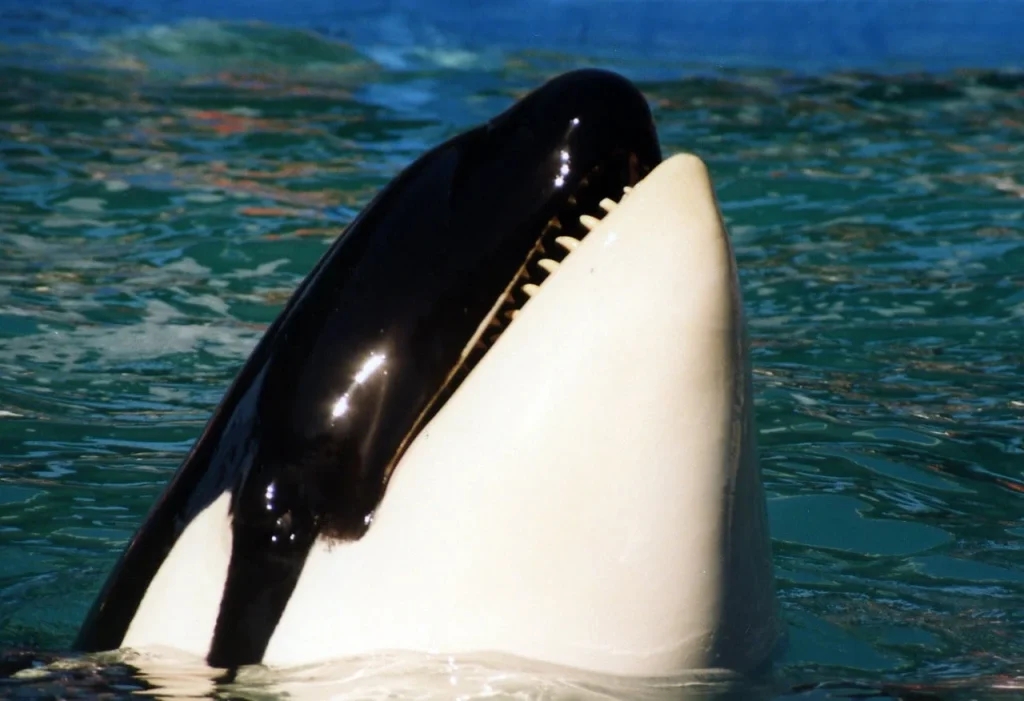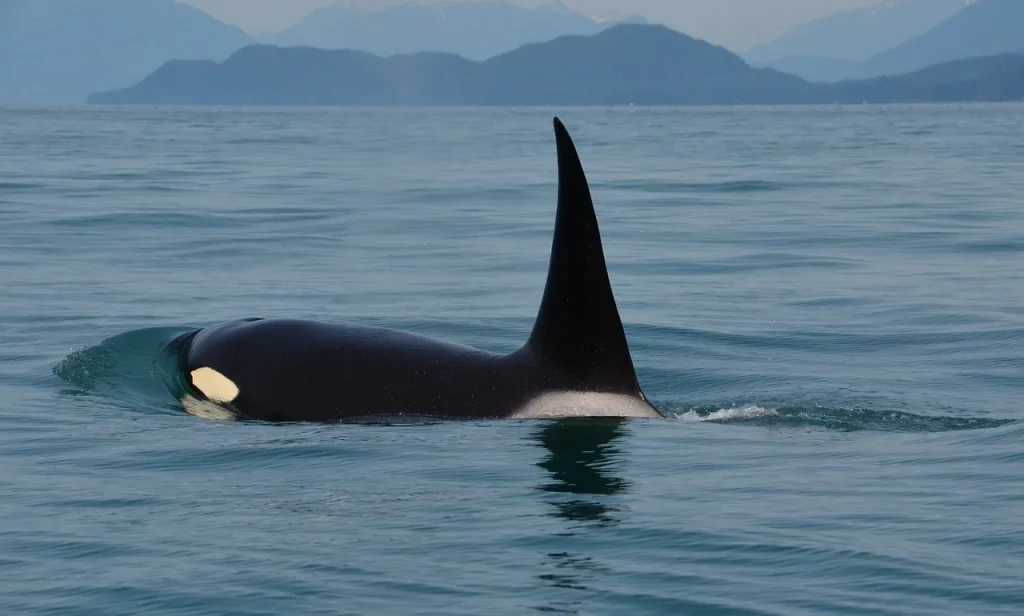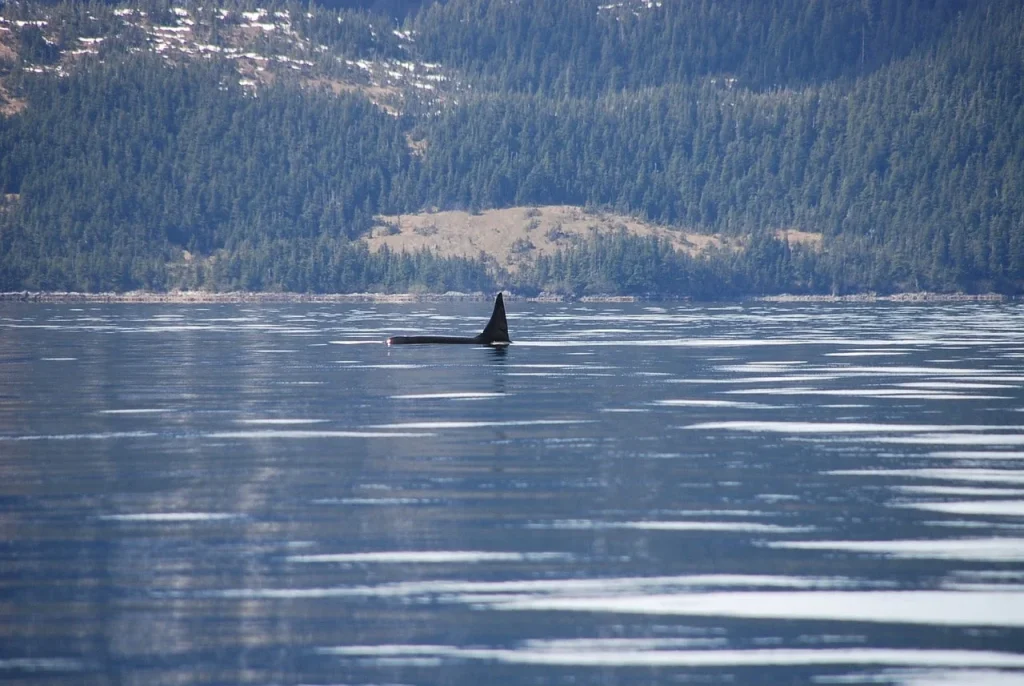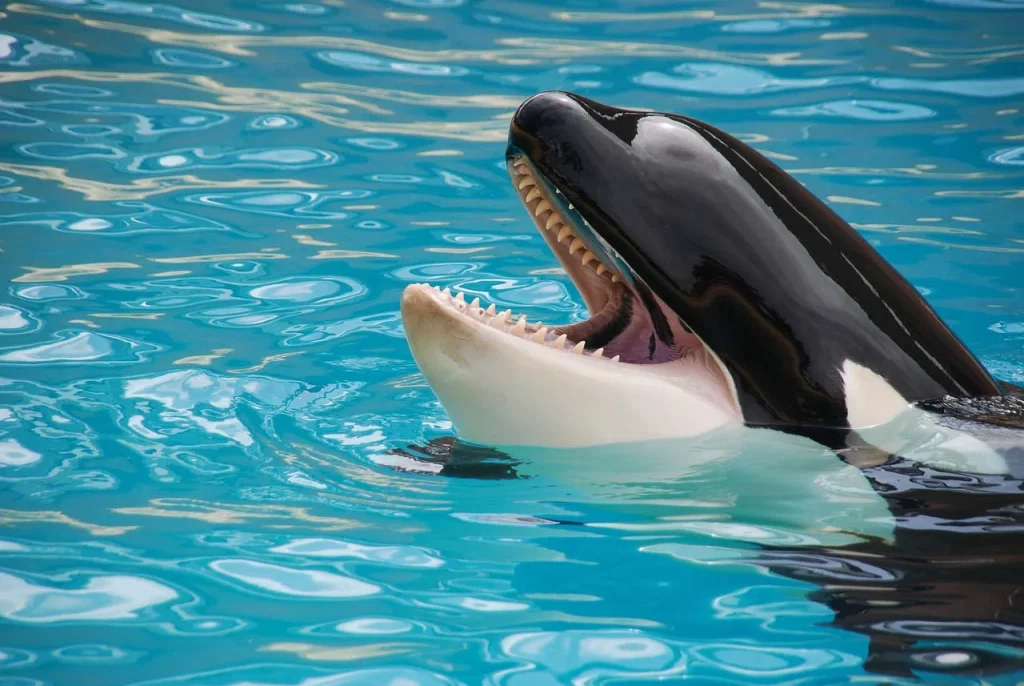Did you know that orcas are found in every ocean around the world? These powerful predators, also known as killer whales, lead lives full of mystery and wonder. Today, we’re embarking on a journey through some amazing facts about orcas.
You’ll learn about their diet, behavior, and the crucial role they play in the marine ecosystem. Join us as we uncover the secrets of these awe-inspiring creatures.
The killer whale is not really a whale. It’s a member of the dolphin family.
Jacques Cousteau
Orca Facts
Get ready to be amazed by these facts. Pay close attention, as a quiz at the end will test your understanding and make you an orca expert!
- These marine giants use a sophisticated method of vocal learning that mirrors human regional dialects.
- Males can reach up to 32 feet in length, making them one of the ocean’s most formidable predators.
- Their hunting techniques are incredibly diverse, adapting uniquely to region and prey type.
- Each group follows a distinct culture, which includes unique hunting practices and vocal behaviors.
- The social structure of these creatures is matrilineal, meaning groups are centered around the female line.
- Captivity significantly reduces their lifespan compared to those in the wild.
- They have been known to intentionally beach themselves to catch seals.
- They cooperate to create waves that wash seals off ice floes.
- Their only known predators are humans.
- Southern resident orcas have been observed to mourn their dead by carrying them for days.
- Intelligence tests reveal they can solve complex problems and use tools.
- They can consume up to 500 pounds of food per day.
- Newborns are born tail-first to prevent drowning during birth.

- Orcas can travel up to 100 miles a day in search of food.
- Their vocalizations can be heard for many miles underwater.
- Orcas in the Antarctic have a yellowish tint due to a diatom layer on their skin.
- Collaborative hunting strategies include herding fish into tight balls.
- Each pod communicates with distinctive sounds exclusive to that group.
- Some populations are at risk due to food scarcity, primarily from overfishing in their environments.
- Brain size in relation to body size is among the largest in marine mammals.
- Menopausal females lead pods and share knowledge critical for survival.
- They can dive over 1,000 feet deep in search of squid or other deep-sea fishes.
- When sleeping, only one hemisphere of their brain shuts down to keep them breathing and alert for threats.
- The distinctive black and white coloration provides camouflage while hunting in the water.
- No two dorsal fins are the same; each individual’s fin is unique like a fingerprint.
- Some cultures hold orcas in high regard, incorporating them into spiritual beliefs and myths.
- Contaminants in the ocean accumulate in their blubber, causing health issues over time.
- Matriarchs may live to be over 90 years old, holding decades of hunting wisdom.

- Interactions between different pods can involve complex social behaviors like gift-giving and vocal mimicry.
- Playful behaviors observed include sliding back and forth on sandbars.
- Underwater, they use echolocation to communicate, navigate, and detect the size and shape of objects.
- Pods have been observed to aid injured or sick members, highlighting their empathetic nature.
- Global populations are highly distinct, with some never interacting despite overlapping territories.
- Their stomachs contain multiple chambers, similar to some terrestrial carnivorous mammals.
- Pollution and vessel noise disrupt their communication, affecting their ability to hunt and socialize.
- Several conservation programs now focus specifically on orca recovery and protection efforts.
- Hybridization between different orca populations has been documented in the wild.
- Their presence in an area is often an indicator of overall marine health.

- Technology such as drone photography and non-invasive tagging has greatly enhanced our understanding of their behaviors.
- Orca populations around the Norwegian coast specialize in herring hunting, displaying unique herding techniques.
- They are one of the few animals known to experience menopause.
- Population-specific prey preferences lead to unique adaptations in teeth wear and dietary requirements.
- Genetic studies show a surprising level of diversity between pods, suggesting long periods of separation.
- They have a massive range, inhabiting every ocean from the Arctic and Antarctic to tropical seas.
- Orcas have been known to assist their hunters, pushing caught fish toward the boat.
- Cultural transmission of hunting techniques and vocal patterns occurs from one generation to the next.
- Some older females help look after the young of other females in the pod, a behavior known as alloparenting.
- Orcas are known to have different dietary preferences based on their geographic location, with some specializing in sharks and rays.
- Their ability to learn and mimic new sounds plays a crucial role in their social interactions and bonding within the pod.
- Unlike most other marine mammals, they are capable of recognizing themselves in a mirror, indicating a high level of self-awareness.
Orca Myths

Now that we’ve explored the facts, let’s continue into separating truth from myth. It’s time to clear up some common misconceptions.
- Orcas Are Aggressive Toward Humans
They are not known to be aggressive toward humans in the wild. There have been no fatal attacks on humans by orcas in the wild, and most interactions are characterized by curiosity rather than aggression. - Orcas Thrive in Captivity
In captivity, they often suffer physically and psychologically. Reduced space and lack of social structures contrast starkly with their complex, dynamic lives in the ocean. - Orcas Are Whales
Although commonly called “killer whales,” orcas are actually the largest species of dolphin. This classification is based on anatomical and behavioral traits that align more closely with dolphins. - Orcas Can Adapt to Any Ocean Environment
They are highly specialized and their populations are adapted to particular types of prey and specific regions. Some populations are at risk when their environment changes or their prey becomes scarce. - Orcas Have No Natural Predators
While adult orcas are apex predators with few threats from other wildlife, young orcas can be vulnerable to larger sharks. This vulnerability is more pronounced in certain regions and circumstances.
Orca Quotes

Let’s continue to the next section, the quotes. As always feel free to share more in the comments and I will add them to the list.
Orcas remind us that we are not the only species that has a complex society.
Jane Goodall
Jane Goodall, renowned for her work with chimpanzees, has often spoken about the intelligence and social complexity of various animals, including orcas, drawing parallels to human societies.
When you look into the eyes of an orca, you know someone is home.
Michael Nichols
Wildlife photographer Michael Nichols conveyed the profound presence and intelligence of orcas, suggesting a deep consciousness through their expressive eyes.
Orcas are the artists of the sea. They paint a picture of raw beauty and power in their environment.
Paul Watson
Paul Watson, a passionate advocate for marine wildlife and the founder of the Sea Shepherd Conservation Society, describes orcas as powerful and graceful components of the marine ecosystem.
The ocean’s top predator is not the shark, it is the orca.
Sylvia Earle
Marine biologist Sylvia Earle emphasizes the orca’s role at the pinnacle of oceanic food chains, surpassing even the shark in terms of predatory prowess.
Respect the orca for it is both beautiful and powerful, but also integral to our ocean ecosystems.
David Attenborough
Sir David Attenborough, a legendary broadcaster and natural historian, speaks to the dual nature of orcas as both majestic and crucial players in their aquatic habitats.
Orca FAQ

Before you test your knowledge with the quiz, let’s read some common questions. This FAQ section will help solidify your understanding of orcas, so read carefully.
- Can orcas kill humans?
Orcas, also known as killer whales, are powerful marine predators. While there are no recorded cases of wild orcas killing humans, they are capable creatures and should be respected in their natural habitat. - How do orcas hunt?
They are strategic hunters, often working in groups to target their prey. They use techniques like herding fish into tight balls or beaching themselves temporarily to catch seals on shore. - Can orcas live in freshwater?
Typically, they are marine animals found in saltwater environments. However, some orcas, like those in the Columbia River, have been known to venture into freshwater for short periods, although they do not permanently reside there. - What do orcas eat?
They have diverse diets, depending on their location and pod culture. Some primarily eat fish, while others hunt marine mammals like seals, dolphins, and even whales. - Are orcas endangered?
The conservation status of orcas varies by population. Some populations, like the Southern Resident killer whales in the Pacific Northwest, are endangered due to factors like pollution, reduced prey availability, and habitat disturbance.
Orca Trivia

Welcome to the ultimate orca quiz! Warning: if you score zero, you might just find yourself being volunteered as a salmon in their next show!
Conclusion
Orcas are more than just the iconic black and white whales of the ocean; they are symbols of the wild and mysterious depths of the sea. They navigate vast waters with precision and care, forming tight-knit groups that rely on each other for survival.
By protecting orcas and their environment, we are also safeguarding many other marine species linked to their well-being. Let’s cherish and advocate for these majestic animals. Till next time, stay curious and explore more. Cheers.


